So when you have your lantern, you and your family will set out, and head to any and all shrines within walking distance that catch your fancy. Depending on your location, there may be many stands set up with snacks to buy and games to play, and many lanterns will have little puzzles on them to be solved. It's all very traditional and really exciting. The evening will end with a bonfire at your shrine, lit between a torii and symbolizing the destruction of all bad luck. More often than not, you will also partake in some superstitious activity to rid yourself of bad luck and bring good luck in the New Year.

The point of this festival is to bring families together to face the New Year, and to connect with them as well as with nature and religion, and to generally have a good time and fill the next year of your life with "light". Aha!
This practice is celebrated the world over, really, and the activities will vary, but the general mood and actions are the same. You have your family, you have your lantern, you eat some snacks, you have fun. In America, I know that there are superstitions to eat black eyed peas and spinich on New Year, though I'm not entirely sure why. I think the spinach is supposed to represent money, and wealth to come in the next year. Can anybody fill me in? Anyway, since the Lantern Festival isn't exactly a national holiday here in America, and there isn't a Shinto shrine within walking distance of where I live, my Lantern Festival will be considerably less interesting.
I still have this cake left over from New Year, my family will eat that.
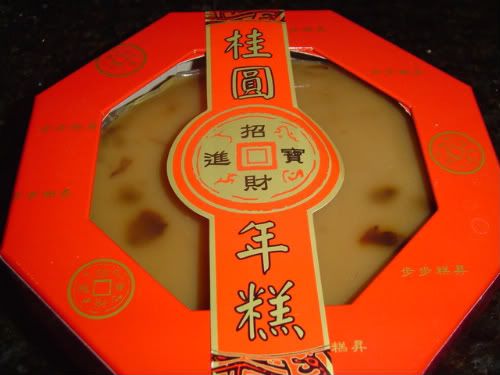
And since it also is a full moon, of course, my mother has decided that we will have a traditional moon-viewing festival, which is basically an excuse to drink good sake and dress in wafuku. Despite doing this every day, and the actual festival being held in August, each month when she gets bored, my mother declares it moon-viewing day, and when it's a full moon we drink and tell ghost stories. Even though this entry is making me sound like a stock character from xxxHOLiC, I will press onward and share with you all some more interesting facts about, what else, lanterns.
Who here enjoys a good story... about a yōkai?
Tough.
You may be familiar with this very famous print, Oiwa-san, by Hokusai, Man of One Million Landscapes.
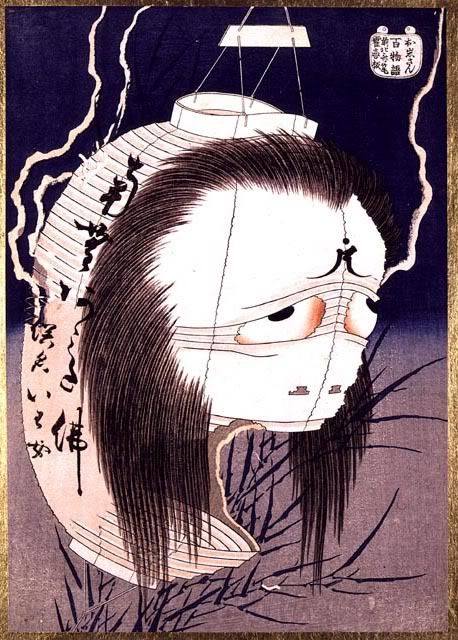
The story of Oiwa is a very interesting one, and I also have a movie based off of it, perhaps to come in a later entry if anyone is interested or I feel like doing it.
While not strictly a lantern-ghost, images of Oiwa and possessed lanterns have become very familiar in the yōkai legends that ran rampant during the Edo period. The lanterns themselves, chōchin, can be recognized as those round lanterns that can be collapsed flat, that nowadays are sold for decoration or festivals, obviously. A lantern spirit is called a chōchinobake, obake meaning ghost.
Unlike most ghosts and monsters that appeared in droves to the terrified inhabitants of Edo, the chōchinobake seemingly kept to themselves to appear only in children's stories, instead of as a legendary character. If you think about it, it makes sense. When it gets dark, you'll need a lantern. Your child, little brat that he is, might mess with your lantern, and, during the Edo period, what monster could contend with the terror of fire wiping out your entire street? So you tell little Saburō that, if he touches the lantern, a monster will come out of it and eat him up.
Chōchinobake are mischievous little creatures, usually depicted with a flailing tongue and wonky eyes. They move by floating around erratically and making weird noises to frighten people. In more modern tales, they are seen as belonging to a demon who inhabits animals (foxes and tanuki, usually), and are held aloft to tempt travelers to their deaths. The lanterns themselves are a type of yōkai called tsukumogami. This is a specific type of spirit that will haunt/materialize in a familiar item. The general consensus is that, when the object reaches its 100th birthday, it will come to life. While not seen as possessed, these items are viewed instead as actual ghosts or monster spirits that become real, and, since they only really exist to frighten and scare humans, since they are made of paper and pretty harmless, besides the sheer terror of not knowing what the hell is happening, they are accepted and warded against, and not viewed as evil.
But of course, there are many different types of monsters, many of which are more legendary and feared by a wider audience than the chōchinobake. And yet they remain one of the most famous and popular images in monster movies. I have raided my mother's collection of such movies and found a multitude of instances in which they are included, but I'll use my two favourite. Feel free to request either of these movies as well, I have access to a library of some of the crappiest and most bizarre movies you'll ever see, so you can ask for further explanation of anything I mention.
We'll start off with Otsuyu: Kaidan Botan-dōrō, a staple botan-dōrō, which is a ghost story that involves more romance than horror. Basically, it's about being in love with/having sex with a ghost, and the repercussions of that love. Regardless, it's a pretty awesome film since it was directed by Tsushima Masaru, a man who brought us six of the multitude of Kunoichi Ninpō Chō films. So you know this shit is going to be great.
This one, sadly, makes an effort to be more artistic and historically accurate than the Kunoichi series, but the special effects and dull and unlikely romantic subplot makes it enjoyable enough. This one is set against the backdrop of the Obon Festival.

It also is attended by this guy, who obviously is not evil and undead and not there to make the lanterns all haunted and whatnot.
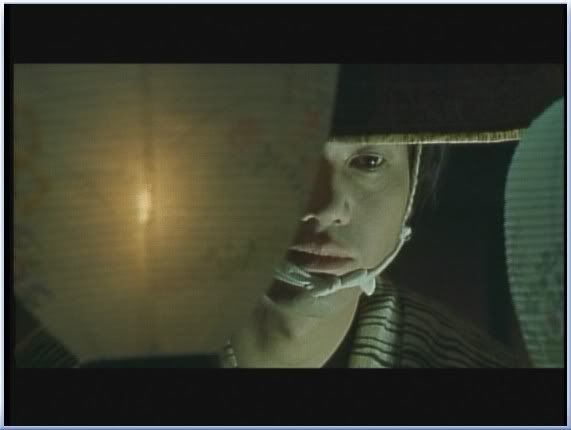
Anyhow, so our leading lady, who is predictably relatively plain and pining over shit that doesn't matter, attempts to seduce our young hero by whining about how her Obon decorations are not festive enough, and commissions our samurai friend to paint a nice flower on her lantern. The lantern in question:

No, that's not foreboding. Anyhow, she eventually dies through a hilarious turn of events, and decides to inhabit the lantern that he so kindly set down his sword to paint for her. So we get an extended scene of her spirit waking up in the lantern and wandering down the streets, in an extended journeying sequence of the lantern floating by itself down the road. Unfortunately, it's pretty obvious that the camera guy is just holding it in front of himself, but that's OK. King Records is innovative.

The lantern then arrives at the young samurai hero's house and knocks on the door.

Another film which features a haunted lantern is Yōkai Hyaku Monogatari. It features a wide selection of your traditional legendary monsters, including the ever-popular cousin of lantern spirits, the umbrella monster, kasaobake, and a more recognizable version of a chōchinobake.
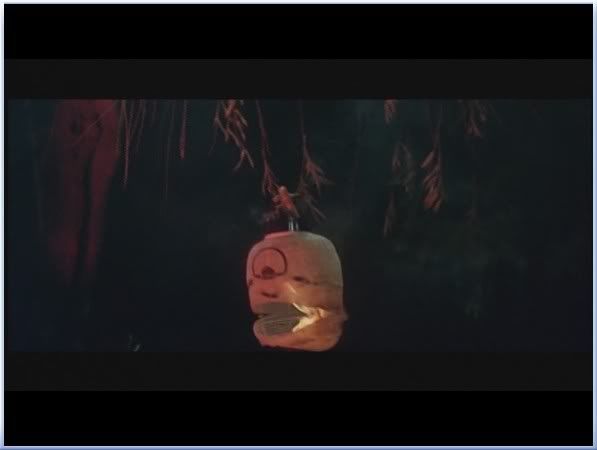
This movie, while more famous and "influential" than our botan-dōrō, is considerably more cult-classic in appeal, featuring our little lantern-and-sharpie combo here. He begins his life as a regular lantern, but then struggles free and rises through the air, scaring the crap out of a few innocent corrupt magistrates.
He then bursts into flames.

Those wires are... part of the lantern, you see. So, chōchinobake then joins forces with an evil river, steals their good-luck money, and then lets the flaming remnants of himself chase the magistrates down the street.
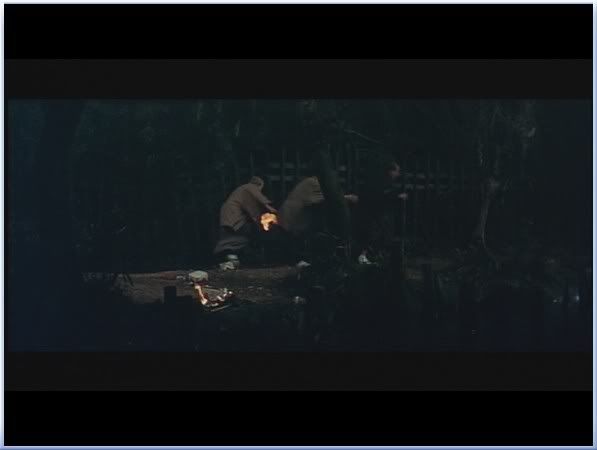
The final instance of creepy lanterns that we will look at today is that of the hōzuki, the Chinese Lantern plant.

So named for their resemblance to the paper lanterns, the kanji used literally can mean "demon's light". These also are depicted as being the lanterns of fox spirits, however they are more often carried by a good fox spirit, as opposed to a yako, the more mischevious and "evil" type of fox spirit.
So since we're on the subject of tradition, and demons, and the hōzuki, I can't go without mentioning the most traditional demon hōzuki art of recent memory. Why, it's the song Hōzuki by Kagrra,. (鬼灯)
Of course you saw that coming.
No comments:
Post a Comment